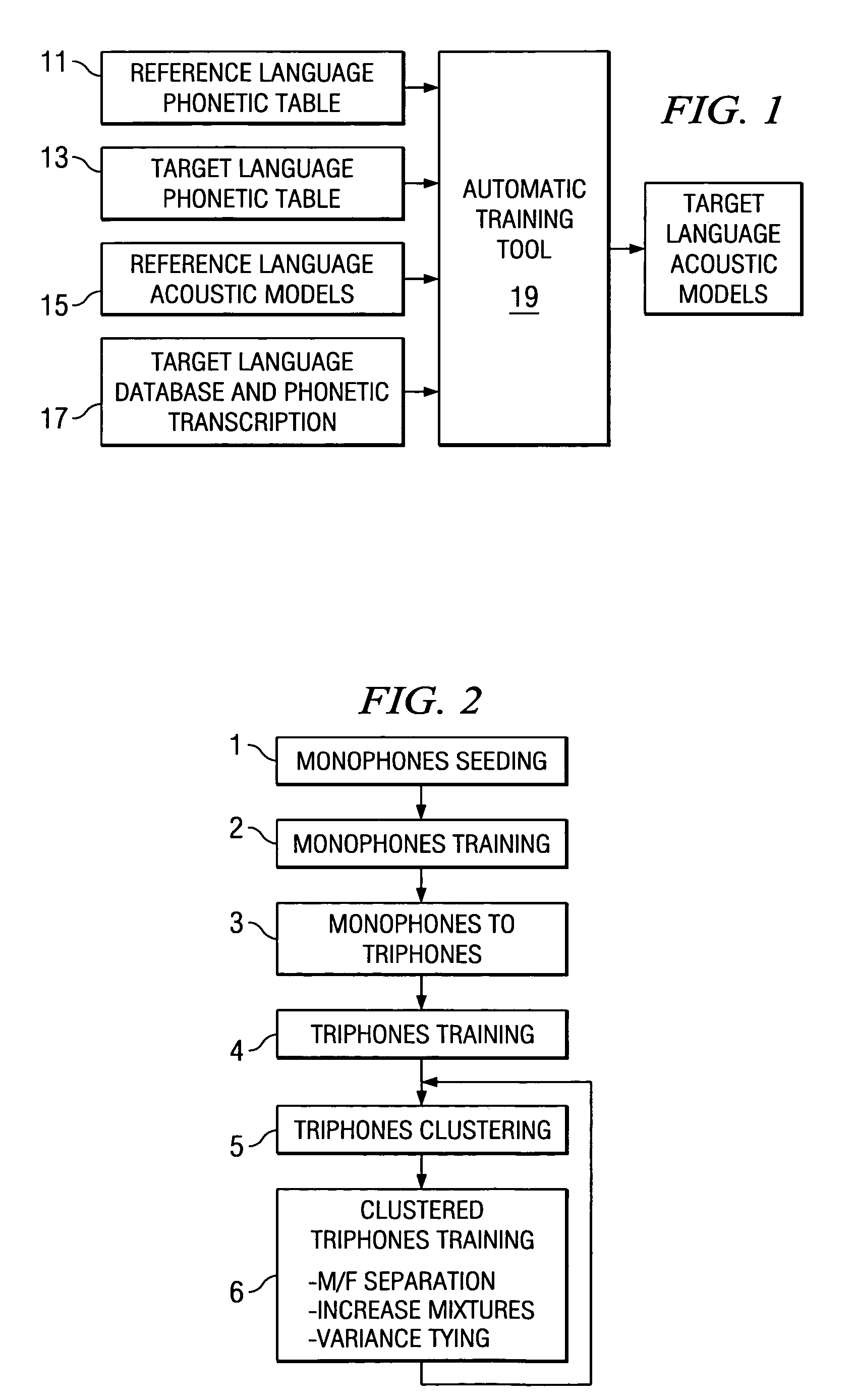Automatic language independent triphone training using a phonetic table
a phonetic table and automatic technology, applied in the field of automatic language independent triphone training for speech recognition, can solve the problems of high labor intensity, complex and time-consuming training of thousands of triphones in any language, and inability to train in any languag
- Summary
- Abstract
- Description
- Claims
- Application Information
AI Technical Summary
Benefits of technology
Problems solved by technology
Method used
Image
Examples
Embodiment Construction
[0022]Referring to FIG. 1 there is illustrated an overall diagram of the method. The method requires as input the following elements:[0023]phonetic tables 11 which characterize the phones, used in one or more reference languages with respect to their model and articulatory properties;[0024]a phonetic table 13, which characterizes the phones used in the target language with respect to its model and articulatory properties;[0025]a set of trained monophones 15 for each reference language; and[0026]a database 17 of sentences in the target language and its phonetic transcription.
[0027]With these inputs, the method of the invention 19 completely and automatically implements all remaining steps of seed monophone model generation (Step 1), monophone training (Step 2), seed triphone model generation, (Steps 3 and 4) triphone clustering (Step 5), and machine intensive training and optimization steps (Step 6) involved in triphone acoustic model training. These steps are illustrated in FIG. 2.
P...
PUM
 Login to View More
Login to View More Abstract
Description
Claims
Application Information
 Login to View More
Login to View More - R&D
- Intellectual Property
- Life Sciences
- Materials
- Tech Scout
- Unparalleled Data Quality
- Higher Quality Content
- 60% Fewer Hallucinations
Browse by: Latest US Patents, China's latest patents, Technical Efficacy Thesaurus, Application Domain, Technology Topic, Popular Technical Reports.
© 2025 PatSnap. All rights reserved.Legal|Privacy policy|Modern Slavery Act Transparency Statement|Sitemap|About US| Contact US: help@patsnap.com



